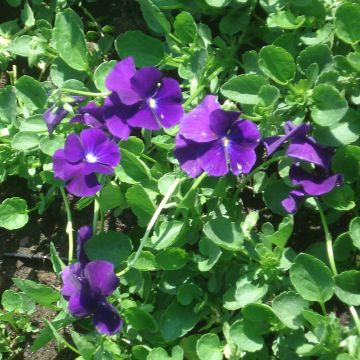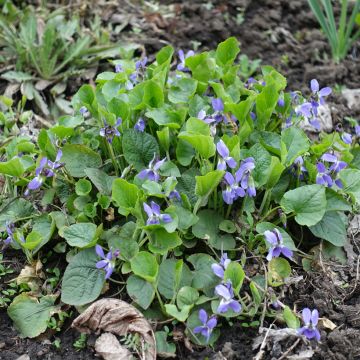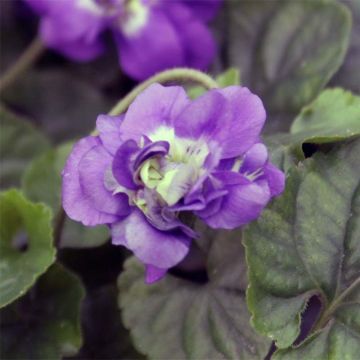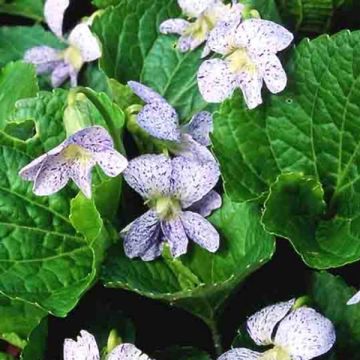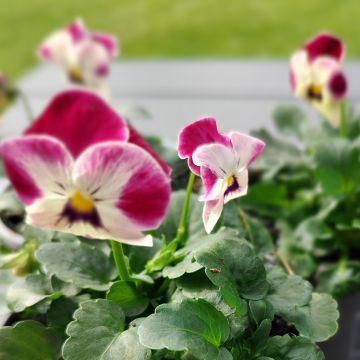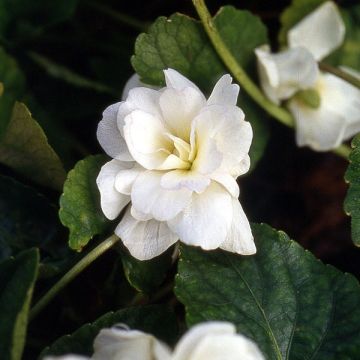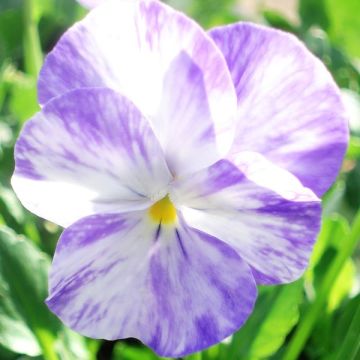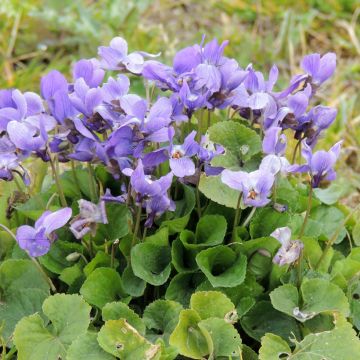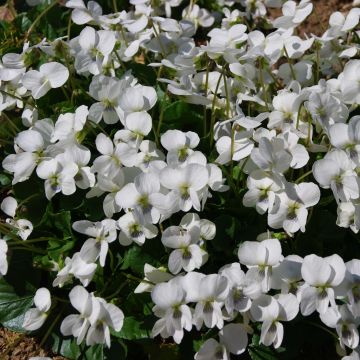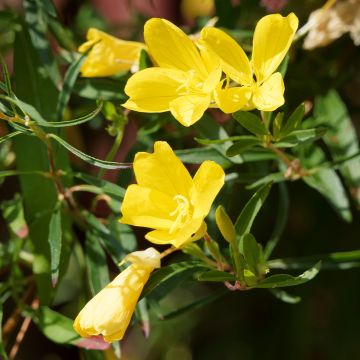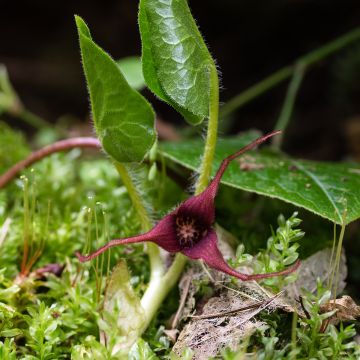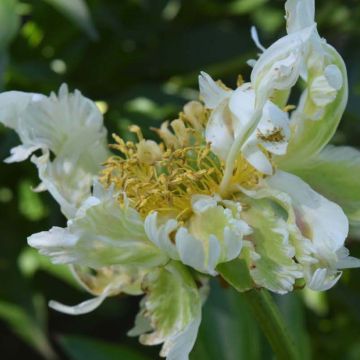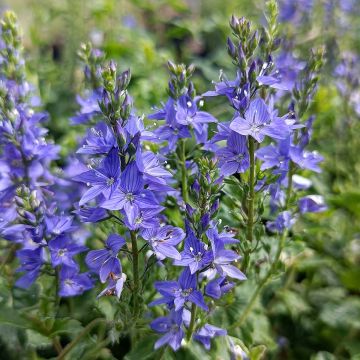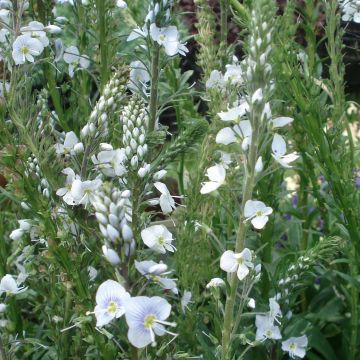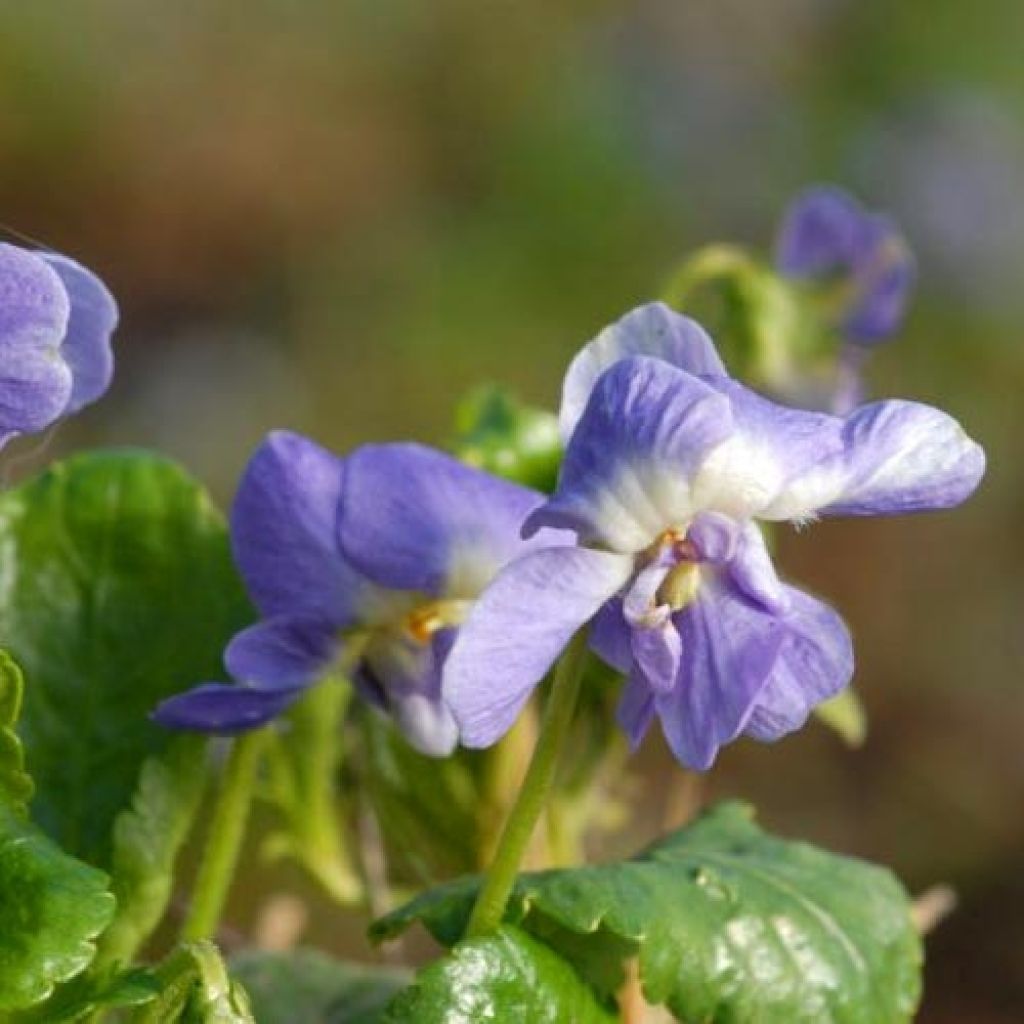

Violette odorante Parme de Toulouse - Viola suavis
Viola suavis Parme de Toulouse
Viola suavis Parme de Toulouse
Parma violet
Did not flower this year, so no review.
Éliane , 09/09/2024
This plant carries a 12 months recovery warranty
More information
We guarantee the quality of our plants for a full growing cycle, and will replace at our expense any plant that fails to recover under normal climatic and planting conditions.
From €5.90 for pickup delivery and €6.90 for home delivery
Express home delivery from €8.90.

Does this plant fit my garden?
Set up your Plantfit profile →
Description
Viola suavis Parme de Toulouse is a truly adorable variety of violet, distinguished from the wild species Viola suavis with its lilac colour and its small, double, fragrant flowers. This perennial with creeping rhizomes will eventually form large decorative carpets in winter, of a beautiful dark green colour, flowering quite early at the end of winter or early spring. In the garden, it easily establishes itself in shaded areas, even occasionally dry soils, and forms carpets where many perennials struggle to grow. It is also a good plant for flowering containers.
Viola suavis (synonym Viola alba subsp sepincola) is the parma violet, not to be confused with the Viola odorata or sweet violet. This small perennial of the Violaceae family is native to southern Europe, except Greece and southern Italy.
Viola suavis Parme de Toulouse differs Viola suavis with its larger double flowers, delicately touched with white in its mauve colour. This groundcover perennial forms rounded tufts of heart-shaped leaves that spread thanks to short almost woody underground stolons. The foliage, more or less evergreen in winter, may disappear in summer during drought. From March-April to August, the floral stems emerge directly from the stump. The flowering is at its peak in March and may recur in August if the climatic conditions allow it. The numerous small frilly flowers in a lilac colour release a delicious scent. The flower of Viola suavis Parme de Toulouse is sometimes used in pastries; the leaves are also aromatic and edible.
Viola suavis Parme de Toulouse will thrive in a semi-shaded positions, in a rather humus-rich, light soil, but it is an undemanding plant that can adapt to any good, well-drained garden soil, where it wanders at will and easily hybridises with other violets. It can be used everywhere: at the base of trees, in border beds or rockeries with other violets and wild pansies, primroses, and resistant small ferns. In drier soil, it can accompany Anemone blanda, Cyclamen Coum or hepatica. It can also be grown in pots or containers placed on the windowsill (for the fragrance), or on the patio, without forgetting to water. In the language of flowers, it has now become a symbol of modesty or a secret love.
Violets and pansies belong to the genus Viola. How to differentiate a violet from a pansy? By the arrangement of their petals: the first has two upright petals and three petals facing downwards, the second has four upright petals, and the fifth, larger than the others, lowers its head. Violets are almost all native to temperate regions of the globe. The vast majority of them are perennial, but hybrids with large flowers are sold and used as annual plants.
Report an error about the product description
Viola suavis Parme de Toulouse in pictures
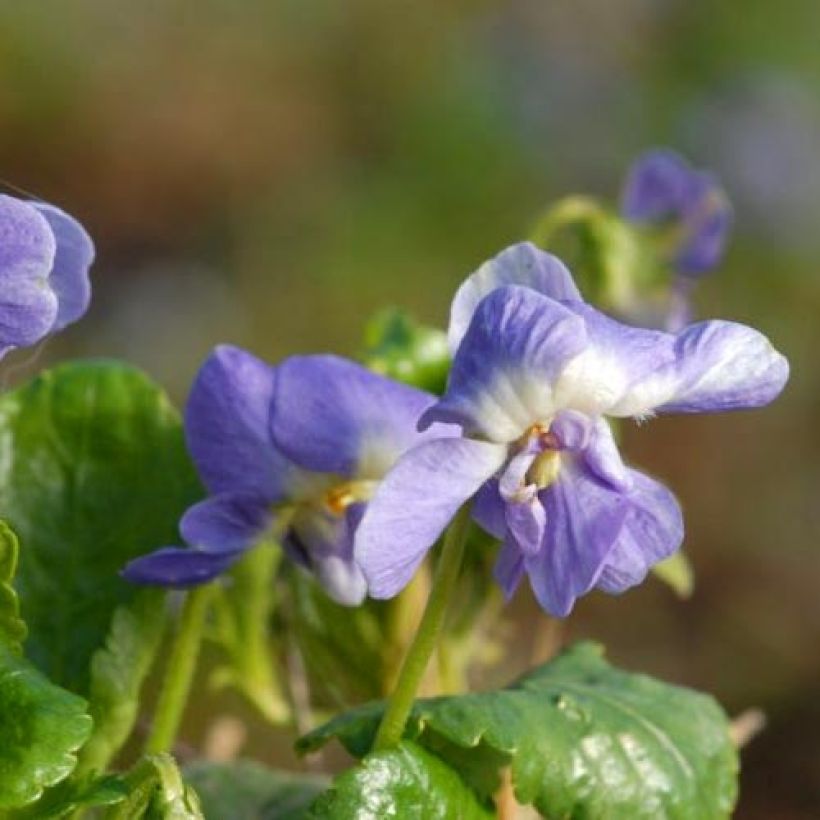

Flowering
Foliage
Plant habit
Botanical data
Viola
suavis
Parme de Toulouse
Violaceae
Parma violet
Cultivar or hybrid
Other Viola - Violets
Planting and care
Easy to grow, quite hardy and fast-growing. Cultivate Viola Parme de Toulouse in semi-shade in a regular, fairly moist and light soil. Water regularly in the first year, but not excessively. Once well established, this violet tolerates dry shade and rocky soils. Its foliage will be more or less evergreen in winter and summer depending on the climate and regions.
Planting period
Intended location
Care
-
, onOrder confirmed
Reply from on Promesse de fleurs
Spring flowering perennials
Haven't found what you were looking for?
Hardiness is the lowest winter temperature a plant can endure without suffering serious damage or even dying. However, hardiness is affected by location (a sheltered area, such as a patio), protection (winter cover) and soil type (hardiness is improved by well-drained soil).

Photo Sharing Terms & Conditions
In order to encourage gardeners to interact and share their experiences, Promesse de fleurs offers various media enabling content to be uploaded onto its Site - in particular via the ‘Photo sharing’ module.
The User agrees to refrain from:
- Posting any content that is illegal, prejudicial, insulting, racist, inciteful to hatred, revisionist, contrary to public decency, that infringes on privacy or on the privacy rights of third parties, in particular the publicity rights of persons and goods, intellectual property rights, or the right to privacy.
- Submitting content on behalf of a third party;
- Impersonate the identity of a third party and/or publish any personal information about a third party;
In general, the User undertakes to refrain from any unethical behaviour.
All Content (in particular text, comments, files, images, photos, videos, creative works, etc.), which may be subject to property or intellectual property rights, image or other private rights, shall remain the property of the User, subject to the limited rights granted by the terms of the licence granted by Promesse de fleurs as stated below. Users are at liberty to publish or not to publish such Content on the Site, notably via the ‘Photo Sharing’ facility, and accept that this Content shall be made public and freely accessible, notably on the Internet.
Users further acknowledge, undertake to have ,and guarantee that they hold all necessary rights and permissions to publish such material on the Site, in particular with regard to the legislation in force pertaining to any privacy, property, intellectual property, image, or contractual rights, or rights of any other nature. By publishing such Content on the Site, Users acknowledge accepting full liability as publishers of the Content within the meaning of the law, and grant Promesse de fleurs, free of charge, an inclusive, worldwide licence for the said Content for the entire duration of its publication, including all reproduction, representation, up/downloading, displaying, performing, transmission, and storage rights.
Users also grant permission for their name to be linked to the Content and accept that this link may not always be made available.
By engaging in posting material, Users consent to their Content becoming automatically accessible on the Internet, in particular on other sites and/or blogs and/or web pages of the Promesse de fleurs site, including in particular social pages and the Promesse de fleurs catalogue.
Users may secure the removal of entrusted content free of charge by issuing a simple request via our contact form.
The flowering period indicated on our website applies to countries and regions located in USDA zone 8 (France, the United Kingdom, Ireland, the Netherlands, etc.)
It will vary according to where you live:
- In zones 9 to 10 (Italy, Spain, Greece, etc.), flowering will occur about 2 to 4 weeks earlier.
- In zones 6 to 7 (Germany, Poland, Slovenia, and lower mountainous regions), flowering will be delayed by 2 to 3 weeks.
- In zone 5 (Central Europe, Scandinavia), blooming will be delayed by 3 to 5 weeks.
In temperate climates, pruning of spring-flowering shrubs (forsythia, spireas, etc.) should be done just after flowering.
Pruning of summer-flowering shrubs (Indian Lilac, Perovskia, etc.) can be done in winter or spring.
In cold regions as well as with frost-sensitive plants, avoid pruning too early when severe frosts may still occur.
The planting period indicated on our website applies to countries and regions located in USDA zone 8 (France, United Kingdom, Ireland, Netherlands).
It will vary according to where you live:
- In Mediterranean zones (Marseille, Madrid, Milan, etc.), autumn and winter are the best planting periods.
- In continental zones (Strasbourg, Munich, Vienna, etc.), delay planting by 2 to 3 weeks in spring and bring it forward by 2 to 4 weeks in autumn.
- In mountainous regions (the Alps, Pyrenees, Carpathians, etc.), it is best to plant in late spring (May-June) or late summer (August-September).
The harvesting period indicated on our website applies to countries and regions in USDA zone 8 (France, England, Ireland, the Netherlands).
In colder areas (Scandinavia, Poland, Austria...) fruit and vegetable harvests are likely to be delayed by 3-4 weeks.
In warmer areas (Italy, Spain, Greece, etc.), harvesting will probably take place earlier, depending on weather conditions.
The sowing periods indicated on our website apply to countries and regions within USDA Zone 8 (France, UK, Ireland, Netherlands).
In colder areas (Scandinavia, Poland, Austria...), delay any outdoor sowing by 3-4 weeks, or sow under glass.
In warmer climes (Italy, Spain, Greece, etc.), bring outdoor sowing forward by a few weeks.

































